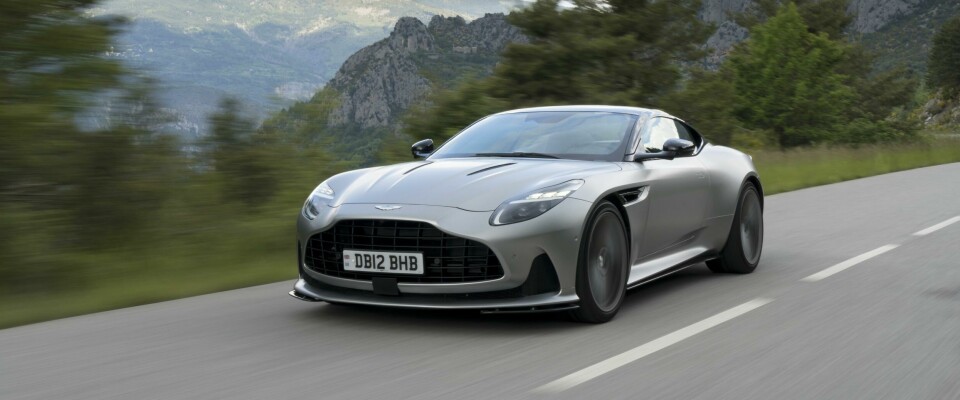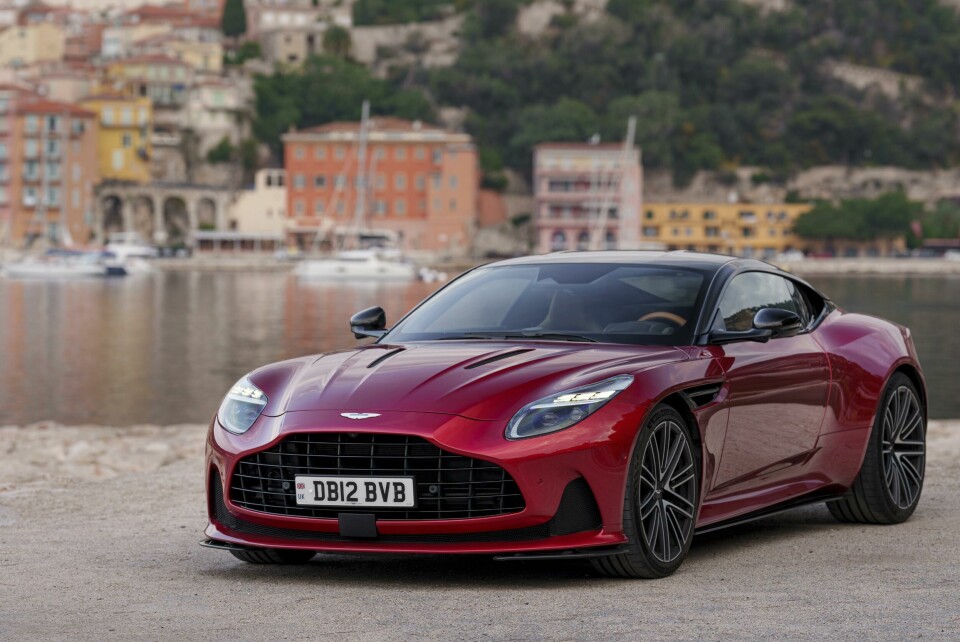
Aston Martin DB12 is all about the experience
Mark Smyth spoke to Aston Martin’s director of design, Miles Nurnberger, about the all-new DB12
Aston Martin has been going through a design revolution in recent years, most recently with the new Vantage. It all really started with the DB11 though and this year the British automaker celebrates 75 years of its DB models, named after company founder David Brown. The DB5 is probably the most famous along the way but now there is a new one, the DB12, and the biggest talking point is the interior which features the most significant change for decades.
After a brief stint at Dacia, Miles Nurnberger returned to Aston Martin as design director and Car Design News chatted to him at the launch of the DB12 in Monaco. He explained that it was essentially finished before he left for Dacia and when he returned, he simply had to sign off the finished product.
Car Design News: Given your break from Aston Martin at Dacia, how much involvement have you had with the DB12?
MN: A fair amount. If you imagine the development cycle of a car it wasn’t at the final sign off stage, but when I went away it was all but done inside and out. I did wonder when I walked in the door as you never know, but it was so close — it was in the final bits of Class A surfacing so generally things don’t change at that point.
CDN: While there are some cues from the DB11 and Vantage, this represents a new design language for Aston Martin, so talk us though some of your highlights.
MN: There’s a re-emphasis on the grille. If you look at the front, there’s a more sculpted appearance. The DB11 was quite a technical car, it was what we were aiming at at the time. It was a big step on from the DB9 at that moment in time and it had more of a technical appearance. This car is much more evolutionary in the way that I would look at the move from DB4 to DB5 to DB6. Look across the car and see the fender line and the shape of the lights; it’s bringing back a little bit more of the classicism of more contoured, fluid surfacing that Aston is more traditionally known for. So it has a little bit more of that romantic gesture to it.
For years designers moaned about number plates, now they moan about radars
CDN: The grille is bigger to enhance cooling but the radar must have been a frustrating thing to incorporate?
MN: It’s our new pain. For years designers moaned about number plates, now all designers do is moan about radars. Fundamentally it’s very difficult, there’s a certain position and a certain box that you can run the radar in, and even on a car like this you have to make small engineering design compromises about where you’re going to put it. Maybe you can disguise it more, but actually the ripple effect of what it does to the rest of the design is not where you want to be. At some point you have to say right, this is a safety device, it’s mandated within regulations and you have to work knowing you’ve got to deal with it. But still, in an ideal world would I like to remove it? Of course I would.

CDN: You have a new headlamp design but there’s no common signature with other models, why is that?
MN: On front headlamps, to some extent, we’ve avoided that for years. We have our grille, it’s iconic, it’s very clear on the front of the car. We are not searching for overly fanciful gestures in the grille because we believe you have your leading actor and you have your supporting actors; what we don’t want is the two trying to fight with each other. The headlights are very honest in their appearance. They’ve obviously had care and attention given to them, but we are not looking to make them challenge or fight for attention over and above the grille.
CDN: The real design revolution has happened with the interior, so what brought about the big change?
MN: For many years the company had under-invested on interiors and that meant in multiple ways — design department resource, technology, investment in material change, all elements through that. Around three years ago we made a decision and more than tripled the interior design team. That allowed a different, bolder approach in what we wanted to do and some fresh blood going into the team. This is a very big step on, but it is the first step in a renewed push on interior design.
We are a luxury sports car company, we’re not a technology company
CDN: Was there a temptation to prioritise technology in the interior?
MN: It’s clear digitalisation is a trend with more screens in cars, but we had long, hard discussions on what that really meant to Aston Martin. Technology is important, we’ve all got a nice phone in our pocket, but we are a luxury sports car company, we’re not a technology company. The idea for us was to layer the tech into the car so it feels part of the car, and have this very strong horizontal element. Classically Aston Martins have had a waterfall and this is a slightly different take on it.
CDN: You’ve gone with traditional buttons for many controls but did you consider putting more of them in a screen?
MN: The big discussion was tactile versus digital. Should switch packs all go in the screen, for example. We got to a point of talking not just performance of the car but performance of the driver, reducing irritations so that you can concentrate on driving and making it a more enjoyable experience.
In the end, switch packs came back, because there are moments when you’re driving when you want to drive it quicker and have to adjust the seat. What would be the worst thing in the world is to pull over and have to search through a menu to do that. We did some early concept work where the entire centre stack was digital but we dialled back from that because we believe this isn’t a car you need in an “A-to-B” sense, it’s a car you desire and you want the experience of it.
CDN: Did you take a different approach to materials with the DB12?
MN: We’re looking at vegan interiors for the future and we’re working with Bridge of Weir on a more eco-friendly leather. The luxury car world is a very interesting place right now with all these new materials like banana or mushroom leather, but the customer is very much still asking for leather. We do have a new open-pore wood and we’ve also got metallic surfaces using brushed and dark aluminium in the car. In keeping with the car’s performance characteristics there is also a lot more carbon fibre, which wasn’t the case with the DB11.




















